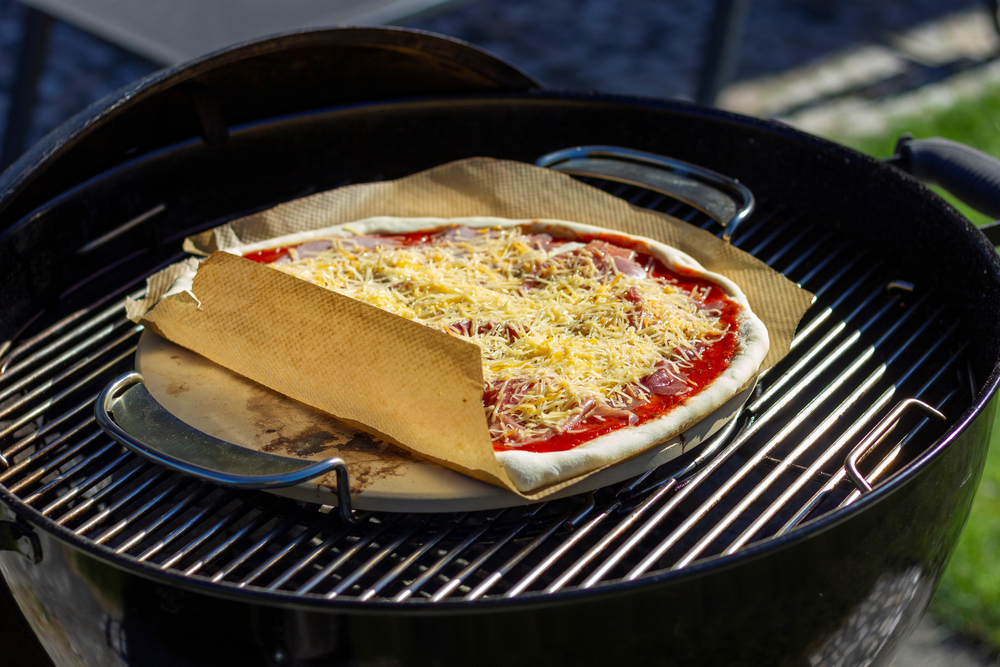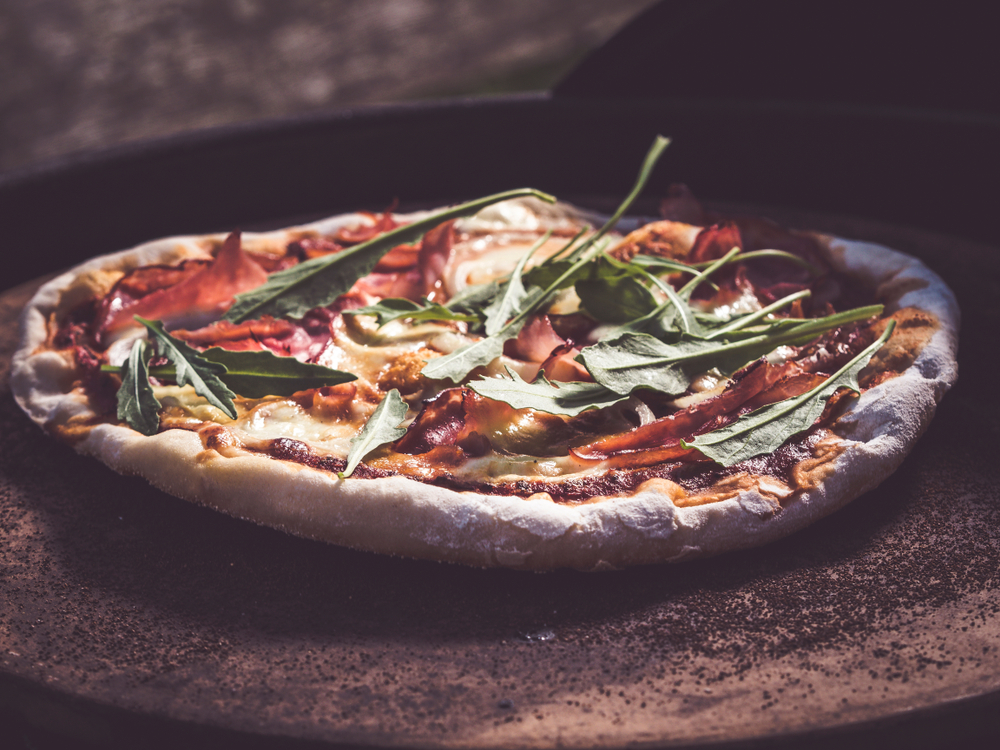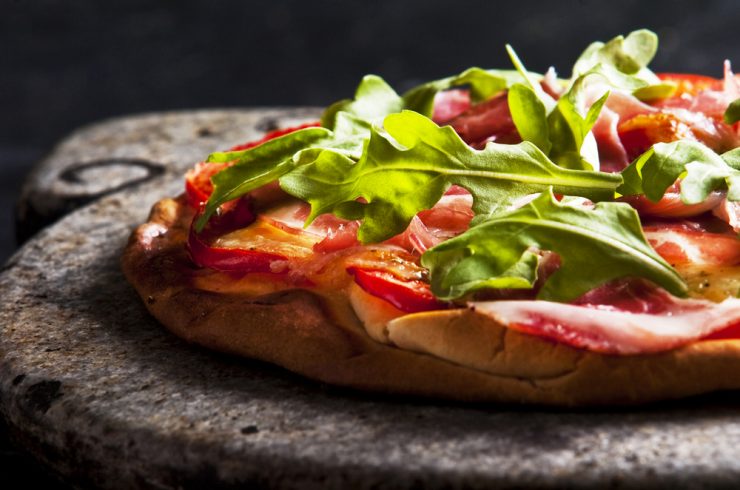Ask your foodie friends about their number one requirement for baking delicious pizza at home, and you’ll most likely hear them rave about their pizza stones.
These readily available, inexpensive kitchen tools are a must-have item for quality homemade pizza with a crispy yet chewy crust and perfectly-cooked toppings. But what is a pizza stone?
From ancient times to the present day, both professional chefs and home cooks have used pizza stones for mouthwatering results. Learning just a few techniques and tips will help you create tasty pizza every time and keep your stone in excellent shape for years to come.
The Pizza Stone: An Ancient Tool
View this post on Instagram
The use of stones in baking is certainly not a new concept. Archeologists have uncovered evidence that baking stones were used as far back as the Paleolithic Period. It’s fitting that baking stones were most likely created during what is also known as the Stone Age, due to stone being the primary material humans used at that time to create tools.
Discoveries have been made from then of fire pits in which stones were placed on hot coals for the purpose of cooking food. Today we have many more resources than those ancestors, but cooking with stone remains a valuable technique.
Professional Pizza at Home
Most professional pizza kitchens include a wood-fired or gas-fired oven constructed of brick or steel. Considered the gold standard of pizza baking, a brick, wood-fired pizza oven allows the baker to get the oven incredibly hot, up to 800 degrees Fahrenheit!
Dry heat is conducted so that, in a very few minutes, the bricks transfer heat from the wood below to the crust and, more indirectly, to the toppings above, for a perfectly baked, authentic Italian-style pizza.
A gas-fired, brick, or steel oven follows the same concept and works as well, although it doesn’t impart the smoky wood flavor that makes brick oven, wood-fired pizza unmistakable. Since most of us don’t have a professional pizza oven in our homes, we need to find the next-best substitute to make excellent pizza at home. Enter the pizza stone!
Baking Stones: Back and Better Than Ever
In recent years, cooks have rediscovered the value of cooking food on baking stones. So, what is a pizza stone? Made most often of ceramic but also available in stone, clay, and other materials, a pizza stone today is a round, porous, flat piece of cookware designed for cooking pizza.
In the home oven, the stones get very hot, and they absorb and retain heat beautifully, mimicking as close as possible the extreme heat of a wood-fired oven. You can even use a pizza stone on a grill!

Pizza stones are readily available in stores that sell kitchenware and home goods as well as online at numerous retailers. Customers can expect to pay from $20-$50 for a quality pizza stone, with ceramic versions typically less expensive than those made of stone or clay. A 16″ pizza stone is the perfect size to handle just about any pizza a home baker whips up.
How to Use a Pizza Stone
Following a few simple guidelines to learn how to use your pizza stone ensures flawless pizza every time. Here are the steps to a perfect pie:
- Always place your pizza stone in a cold oven before you begin to preheat. Extreme temperature changes, going quickly from cold to hot or vice-versa, is called “thermal shock” and can cause your stone to crack or even break.
- Preheat your oven to a high temperature: 500-550 degrees Fahrenheit. A very hot pizza stone is the key to cooking your pizza evenly and quickly.
- Allow the stone to heat for at least 30 minutes and up to an hour. Longer truly is better when it comes to heating pizza stones.
- Very carefully remove the stone from the oven before placing your uncooked pizza on it.
- Transfer your pizza to the stone using a pizza peel, and make sure the edges of the pizza do not extend past the edges of the stone. You don’t want cheese and toppings sliding off unsupported crust edges onto your oven floor!
- Bake the pizza for approximately 8-10 minutes. Your pizza is done when the cheese is lightly browned and bubbly.
- Use your pizza peel to remove the baked pizza from the oven.
- Leave the stone itself in the oven, and turn the oven off.
- Allow your pizza stone to remain in the oven for several hours until completely cooled. Carefully remove the stone from the oven.
Not Just for Pizza
While a pizza stone is perfect for pizza, it can be used for various functions in the kitchen. A pizza stone is an excellent choice for baked goods, especially cookies! The stone’s high heat conduction produces a cookie with a crisp crust and soft inside.
Frozen foods also heat well on pizza stones. The stone’s natural absorption properties soak up the ice crystals from frozen food, leading to frozen food that is crisp and flavorful, not soggy. Avoid very greasy foods, but feel free to experiment to discover all your pizza stone’s cooking abilities!
Caring for Your Pizza Stone

Pizza stones, and baking stones in general, are not to be confused with stoneware, which is another type of bakeware that is non-porous. Because pizza stones are porous, it is very important to clean your stone carefully.
Never use soap or detergent of any kind on your stone. The stone will absorb the soap and make your pizzas and other baked goods taste soapy.
Additionally, avoid soaking your stone in water or placing it in the dishwasher. The best cleaning technique is to wipe your cooled stone with a dry cloth or gentle plastic scrubber, using a bit of warm water to loosen any residue.
Staining is expected, but for severe stains, a paste of baking soda and water should scrub them away. After cleaning, thoroughly dry your stone and store it in a cool place. Proper care of your pizza stone will keep it in great shape for years to come.



Add comment